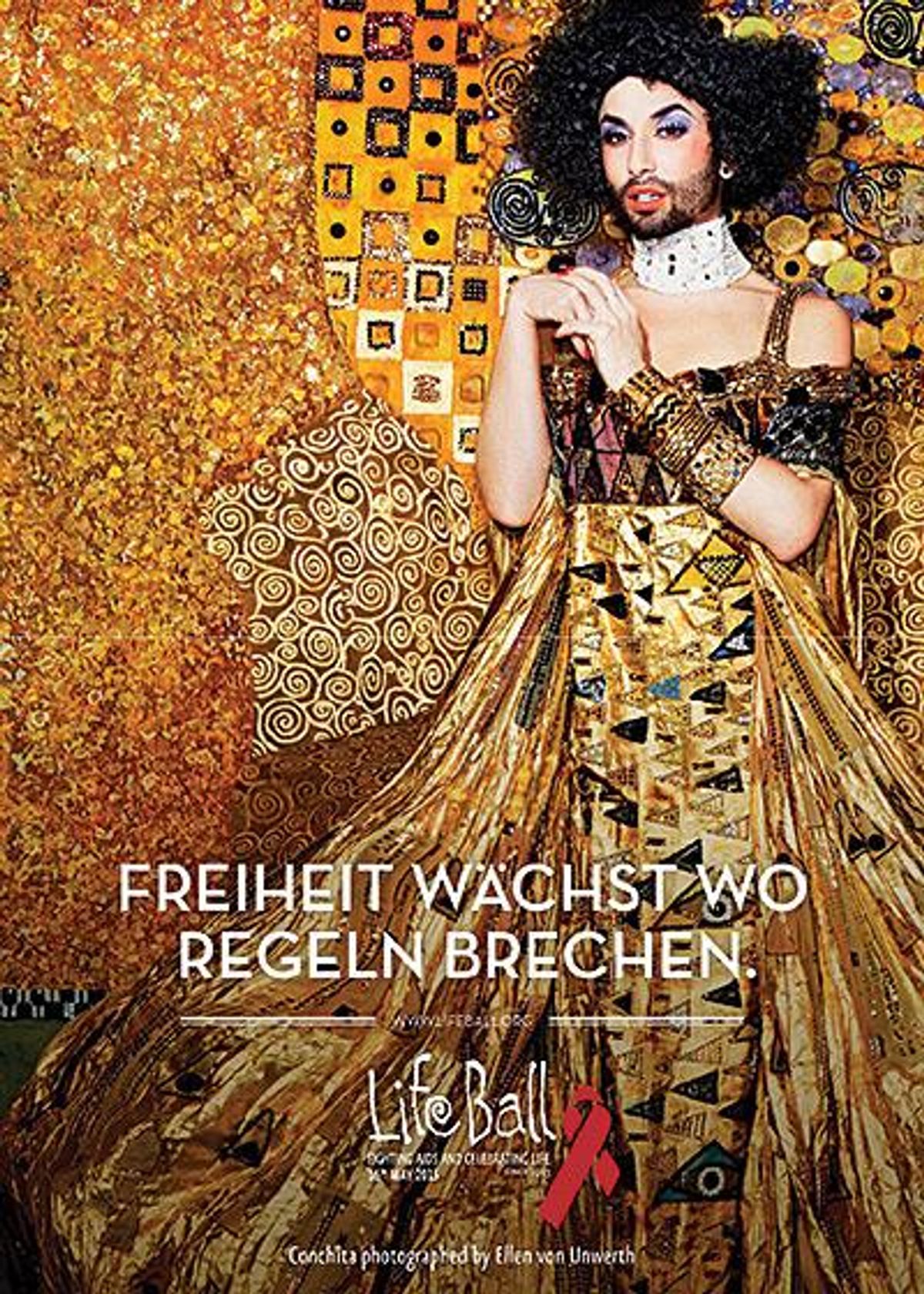
Gery Keszler, founder of one of the largest and most glamorous AIDS fundraising events worldwide, on the ongoing mission to fight stigma.
June 02 2015 1:50 PM EST
May 26 2023 4:12 PM EST
By continuing to use our site, you agree to our Private Policy and Terms of Use.

Life Ball founder Gery Keszler was first confronted with AIDS in 1985 when an acquaintance — patient number 6 in Austria — got ill and died, “and nobody knew what was going on,” he says. When other friends died and still no one was discussing the disease, he was promoted to action. Keszler is founder and organizer of Life Ball, which takes place annually inside Vienna’s City Hall and is one of the biggest AIDS charity events in the world. The aim is to help affected people by fighting against the taboo status of HIV/AIDS in society. He spoke with The Advocate about his work.
The Advocate: Is The Life Ball’s mission the same as it was when it began?
Gery Keszler: The first Life Ball took place in 1993. The topic [of AIDS] was all over the place, some friends got sick and died, but in society, nobody talked about it. I founded AIDS LIFE, the association that organizes the Life Ball. Its mission has been to raise donations for the fight against the deadly illness and to support organizations and projects that help people affected in an unconventional way. This is still the case today. When it comes to medicine, a lot has been achieved, especially since inexpensive generic drugs have been distributed. However, “social AIDS,” how society treats infected people, has been and continues to be a problem that I never tire of pointing out and fighting. Life Ball is an icebreaker against social coldness.
What was the very first Life Ball like?
It cannot be compared to today’s Life Balls. It had a huge momentum of its own, and it was much more anarchical — an actionist initiative by people from the fashion, gay, and art scenes. Back then you had to be very provocative and loud in order to be heard and to achieve something.
Today, our efforts demand an intelligent dialogue. Before the first Life Ball, we hardly sold any tickets, despite well-known supporters, including Thierry Mugler, supermodels like Helena Christensen, and pop icon Debbie Harry. Of course, this was a trial of nerves for me. In the end, I was all the more relieved when the City Hall was filled with guests and the ball was a huge success. This year, all Life Ball tickets were sold within a few seconds.
Was it always a costume ball?
The outfits have always been an important part of the Life Ball. We support our guests’ creativity, for example, by publishing the annual Style Bible (StyleBible.org). We want to encourage people to think about the topic and to show on the outside what they are on the inside. If you wear a mask, many things are easier. Everybody becomes equal, and characteristics such as status or gender become less important. And we are celebrating life in all its diversity. The ball guests’ styling should reflect this.
How do you mark Life Ball’s successes?
On the one hand, there are the donations that we raise during the event. The last year’s, we raised up to approximately $2.7 million. However, AIDS LIFE also considers itself a platform for networking. The publicity that organizations get because of us often leads to more support for them and we can introduce them to potential supporters. HIV and AIDS need to be fought 365 days a year.
One of the supported projects, The Clinton Health Access Initiative, fights mother-to-child transmission of HIV and installs integrated health systems in developing countries. In Eastern Europe, we support the Elton John AIDS Foundation in helping fringe groups such as drug users, sex workers, or men who have sex with men. Another partner organization of ours is amfAR, the Foundation for AIDS Research, which focuses on research and training of professionals. amfAR uses Life Ball’s financial support for a medical network of pediatricians in Southeast Asia. There, children and adolescents in eight countries receive better care and better access to medication. We also work with UNAIDS and the Global Fund, but at the same time, we support smaller projects such as Operation Bobbi Bear or New Hope for Cambodian Children.
Is there a disadvantage to the reputation the Life Ball has as a fabulous party?
Yes. Life Ball celebrates life, and many people only see the glamour and all the stars who are there and support us every year on a voluntary basis. We are living in a world where there are contradictions such as celebration and despair, life and death — this creates suspense. And this is what it is all about. Life Ball is not supposed to be pleasant, but it should upset and move people, so that its message is heard even better.
What is your hope for the event this year?
I hope that we will again be able to raise more awareness for reducing fear of contact and encouraging education on HIV/AIDS. And of course, I also hope that we will again be able to increase the net proceeds for our projects. I want the Life Ball to continue to have a lasting impact, motivate and support people, and spread optimism.
Together we can stop AIDS. The goal is within reach, but we must not give up.
Want more breaking equality news & trending entertainment stories?
Check out our NEW 24/7 streaming service: the Advocate Channel!
Download the Advocate Channel App for your mobile phone and your favorite streaming device!